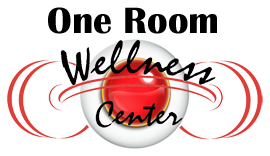No matter what your patient’s health and personal fitness goals may be, the only way to truly get there is by challenging your muscles to become stronger. Improving and restoring muscular strength is like the tide that raises all ships – it positively affects all of the systems of your body from metabolism to heart function to even brain function. By taxing your muscles in a controlled manner, every system in your body that supports the muscles is challenged to become healthier and more efficient. Therefore, every exercise-related health and fitness benefit that we know of can be achieved by simply getting stronger.
The type of activity that most people are familiar with when it comes to exercise and strength training is called isotonic exercise. During this type of exercise, muscles lengthen (eccentric) and shorten (concentric) to do the work. This is what’s happening when you swing a kettlebell, run on a treadmill, or perform a bicep curl with a dumbbell. This is the type of exercise that most people perform when they go to a gym or health club, but there is a flaw in its application: the “tension” on the muscles is intermittent on each repetition because of the momentum and speed used. This makes most forms of isotonic exercise time inefficient and slow to produce the kind of results you should get for the effort.
Isometric Exercise: More effective, more time efficient, & safer
What happens when you take away the inefficiency factors of momentum and speed when performing exercise? You end up with a motionless type of exercise that can optimally stimulate strength and muscle physiology that is at least equal to those results obtainable with full-range isotonic training, but in significantly less time and with the least amount of wear and tear possible… the most desirable outcome.
This type of motionless exercise is called isometric exercise, and the concepts and principles that surround it have been around for almost a century. But it is only recently that medical research has begun to bring isometric exercise and its benefits to the forefront of the health and fitness arena because it’s application has become easier with the invention of several types of equipment that can make it easier for people to apply this method.
The Magic Behind Isometric Exercise
By definition, isometric exercise (or static training as others have called it) refers to when you apply force to (i.e. attempt to lift or push) an immovable object or fixed resistance (e.g. a bar loaded far too heavy). The “magic” behind why isometric exercise works so well is because of the amount and length of time that continuous tension is safely exerted by the muscles. By maintaining continuous tension throughout each exercise just one brief time interval that lasts between 10-50 seconds in length, you get the same whole-body stimulus in just 15 minutes that a typical gym goer might take over an hour or two to achieve.
Studies have shown that isometric exercises allow you to recruit more muscle during an exercise session that uses mainly compound movements (more than one muscle group simultaneously), and can re-build lost muscle just as effectively as other strength training modalities that take more time to perform. Isometrics also present fewer risks than the other strength training modalities since the joint never moves once you’ve engaged in an isometric exercise movement.
This is the beauty of isometric exercise… when its protocols are applied correctly: It captures what is truly unique about time-efficient but superiorly effective strength training, particularly for the population of people who resist regular exercise as a form of health maintenance.
Manual To Machine Application
Science, technology, and engineering has taken the proven research, concepts, and principles of isometric exercise and developed specific medical fitness devices (exercise machines) in which patients can get their weekly dose of isometric training right inside your office. These very specialized isometric exercise machines provide and easy platform in which you can develop your One Room Wellness Center “Micro Gym” in just 80-200 sq. ft.

Simply by using science to guide the trajectory of their results and prevent unnecessary wear on their joints and tissues, your patients who would be become cash-paying wellness clients will realize how little time it takes to grow fitter and stronger from your expertise inside your One Room Wellness Center “Micro Gym”.

Rich is a Health and Wellness Business Adviser to a variety of health professionals including medical physicians, physical therapists, chiropractors, nurse practitioners, massage therapists, health club owners, and fitness professionals throughout the U.S. During the past 30 years, Rich has conducted training programs for thousands of health professionals regarding the planning and implementation of effective, sustainable, and profitable wellness programs in their practices.
Rich is also the founder of the Medical Fitness Academy, a wellness practice consulting company specifically for health and fitness professionals. The company offers a wide variety of consulting programs that help healthcare practitioners plan, implement, grow, and profit from adding cash-based wellness programs in their practices.
The Academy features wellness practice and business management, marketing and operational materials in the form of multimedia training programs as well as articles, business tools, downloadable forms, checklists and a wide variety of information on the systems and procedures required to operate a successful medical fitness and wellness program.
Rich is recently the the developer of the One Room Wellness Center Strategy, a complete proven business model for implementing a successful wellness program in just 80-200 sq. ft. of any healthcare professional’s office in 60 days or less.
To find out more about our One Room Wellness Center Strategy and if it’s a profit-generating solution for you and your practice, start by talking with us today during a FREE 15-Minute Phone Consultation at 888.311.1345.





